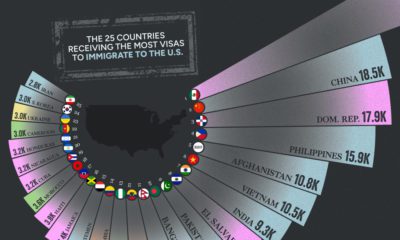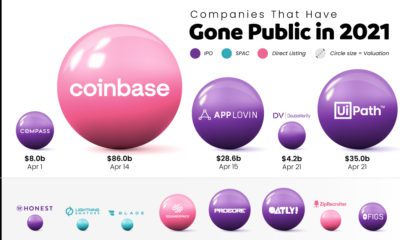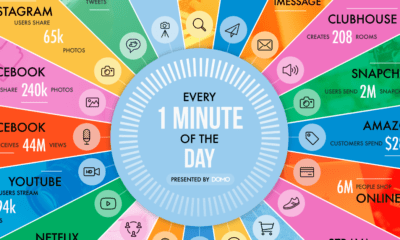Yesterday, user-friendly payment processor Stripe announced a strategic investment and partnership from Visa that values the company at $5 billion. Other investors that participated are not unknowns either: Kleiner Perkins Caufield Byers, American Express, and Sequoia. It was only in December that Stripe was valued at $3.5 billion and in their previous financing, they were valued at just half of that. Stripe will use Visa’s international connections to help it expand beyond the 20 countries it currently services. This type of story is not unusual in the payment space. Companies are scrambling to scale or adopt new technologies that integrate mobile and electronic features to make it easier, cheaper, and faster for customers to pay. The reason for this is that the payments ecosystem has always been more cumbersome and more expensive than it should be. In the United States alone, retail merchants that accept card-based payments were charged about $67 billion in fees. Add the rest of the world to that pie, and it makes it clear that the payments space is as ripe for disruption as any other. Mobile and electronic payments allow customers to pay for goods with a tap of a phone or the press of a button. Two of every three Americans have a smartphone, and mobile payments can typically happen faster with less fees. The earliest adopters of mobile payments have a younger and affluent profile: they average just over 30 years old, have a higher annual income, and spend over 2x more on retail than unwilling non-users of mobile payments.
Big Data and the Developing World
One of the most attractive benefits of mobile payments is the integration of big data and predictive analytics. Retailers will have the capability to link purchases directly with location (GPS), consumer behaviour, purchase history, demographics, and social influence. Analyzing this information will allow companies to reach out to consumers with tailored offerings, loyalty programs, and rewards. Customers will be able to take action right from their mobile device. The opportunities in payments are not just limited to in the United States or even the developed world. Perhaps one of the most interesting opportunities for the mobile payments space is in Africa, where bank penetration is extremely low at only about 25% and mobile phone penetration is higher at 60%. Kenya is a good example of a market where digitization has reached a large portion of the population, giving mobile payments an 86% household penetration. Mckinsey did an analysis looking at the size of revenue pools for mobile payments if each market in Africa had the same penetration as Kenya, and it sees the pools more than doubling in places like Ethiopia and Nigeria. With the population in sub-Saharan Africa expected to balloon from 926 million to 2.2 billion by 2050, their appears to be even greater opportunity.
Tapping In
The earliest potential in the mobile and electronic payments market appears to be in areas such as micropayments, incidental payments, recurring bills, peer-to-peer money transfers, and cryptocurrency. However, in the long term, the concept can be applied to many different facets of commerce. Mobile payments may continue to disrupt the big payments market because of several factors including a young and growing userbase, ease of use, faster transactions, cheaper costs, and increased adoption. As Smittipon Srethapramote, who covers the North American payments industry for Morgan Stanley, concludes in a summary on the subject: “Mobile Payments can expand the global revenue pie from $175 billion to $250 billion, including $45 billion in developed markets and $30 billion in emerging markets.” on But fast forward to the end of last week, and SVB was shuttered by regulators after a panic-induced bank run. So, how exactly did this happen? We dig in below.
Road to a Bank Run
SVB and its customers generally thrived during the low interest rate era, but as rates rose, SVB found itself more exposed to risk than a typical bank. Even so, at the end of 2022, the bank’s balance sheet showed no cause for alarm.
As well, the bank was viewed positively in a number of places. Most Wall Street analyst ratings were overwhelmingly positive on the bank’s stock, and Forbes had just added the bank to its Financial All-Stars list. Outward signs of trouble emerged on Wednesday, March 8th, when SVB surprised investors with news that the bank needed to raise more than $2 billion to shore up its balance sheet. The reaction from prominent venture capitalists was not positive, with Coatue Management, Union Square Ventures, and Peter Thiel’s Founders Fund moving to limit exposure to the 40-year-old bank. The influence of these firms is believed to have added fuel to the fire, and a bank run ensued. Also influencing decision making was the fact that SVB had the highest percentage of uninsured domestic deposits of all big banks. These totaled nearly $152 billion, or about 97% of all deposits. By the end of the day, customers had tried to withdraw $42 billion in deposits.
What Triggered the SVB Collapse?
While the collapse of SVB took place over the course of 44 hours, its roots trace back to the early pandemic years. In 2021, U.S. venture capital-backed companies raised a record $330 billion—double the amount seen in 2020. At the time, interest rates were at rock-bottom levels to help buoy the economy. Matt Levine sums up the situation well: “When interest rates are low everywhere, a dollar in 20 years is about as good as a dollar today, so a startup whose business model is “we will lose money for a decade building artificial intelligence, and then rake in lots of money in the far future” sounds pretty good. When interest rates are higher, a dollar today is better than a dollar tomorrow, so investors want cash flows. When interest rates were low for a long time, and suddenly become high, all the money that was rushing to your customers is suddenly cut off.” Source: Pitchbook Why is this important? During this time, SVB received billions of dollars from these venture-backed clients. In one year alone, their deposits increased 100%. They took these funds and invested them in longer-term bonds. As a result, this created a dangerous trap as the company expected rates would remain low. During this time, SVB invested in bonds at the top of the market. As interest rates rose higher and bond prices declined, SVB started taking major losses on their long-term bond holdings.
Losses Fueling a Liquidity Crunch
When SVB reported its fourth quarter results in early 2023, Moody’s Investor Service, a credit rating agency took notice. In early March, it said that SVB was at high risk for a downgrade due to its significant unrealized losses. In response, SVB looked to sell $2 billion of its investments at a loss to help boost liquidity for its struggling balance sheet. Soon, more hedge funds and venture investors realized SVB could be on thin ice. Depositors withdrew funds in droves, spurring a liquidity squeeze and prompting California regulators and the FDIC to step in and shut down the bank.
What Happens Now?
While much of SVB’s activity was focused on the tech sector, the bank’s shocking collapse has rattled a financial sector that is already on edge.
The four biggest U.S. banks lost a combined $52 billion the day before the SVB collapse. On Friday, other banking stocks saw double-digit drops, including Signature Bank (-23%), First Republic (-15%), and Silvergate Capital (-11%).
Source: Morningstar Direct. *Represents March 9 data, trading halted on March 10.
When the dust settles, it’s hard to predict the ripple effects that will emerge from this dramatic event. For investors, the Secretary of the Treasury Janet Yellen announced confidence in the banking system remaining resilient, noting that regulators have the proper tools in response to the issue.
But others have seen trouble brewing as far back as 2020 (or earlier) when commercial banking assets were skyrocketing and banks were buying bonds when rates were low.













